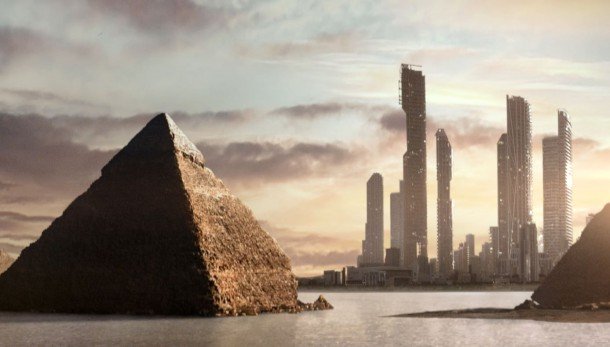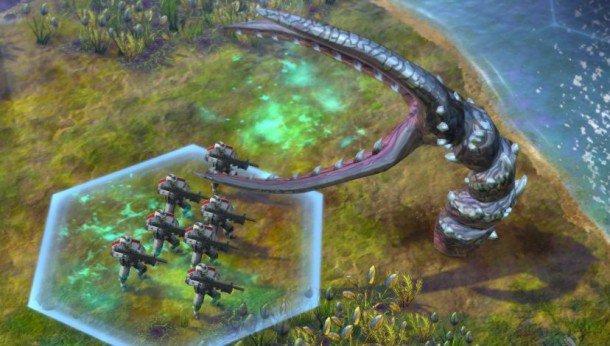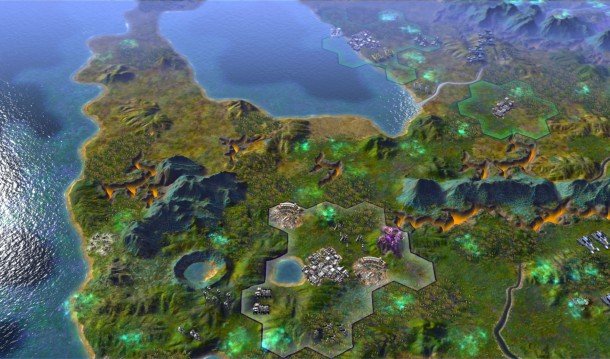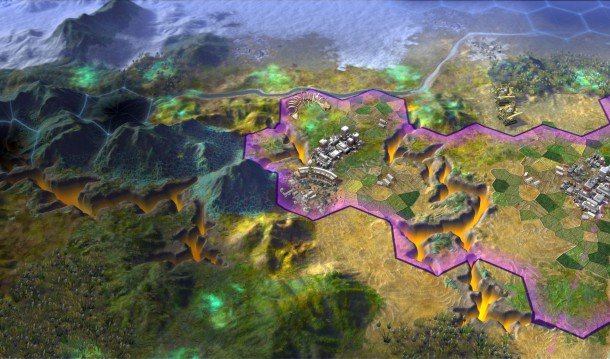Civilization: Beyond Earth hands-on: defining the next phase of human evolution, one turn at a time

Firaxis are firing the classic Civilization turn-based strategy formula into space, for the first time since the release of Alpha Centauri, 15 years ago. Like a rocket escaping the atmosphere, Beyond Earth jettisons the bits of traditional Civ it no longer needs. The technology tree is now a sprawling web, replacing the known milestones of human achievement with the boldest predictions of science fiction. Civ's terran landscapes give way to multiple biomes of alien terrain, teeming with exotic life. As you expand and develop your colony, you will define your relationship with technology and the indigenous creatures that surround you to dictate the next phase of human evolution, rather than merely raking over the coals of the past.
Civilization: Beyond Earth is set after a mass exodus from our home planet. Driven away by overpopulation, dwindling resources and an unstoppable tide of cat gifs, thousands of colony ships have scattered like dandelion seeds across the galaxy, to settle on the first habitable planet they can find. Every time you start a new game, you play as another ship, and can choose a different leader, colony vehicle, cargo haul, colonist group and Earthbound sponsor to keep the early game fresh.
I start my play session with a craft sponsored by Franco-Iberia, and pack its aisles with intellectuals who grant me a boost to science research. I could have picked mercenaries for superior military, aristocrats for efficient commerce, engineers for faster production or pilgrims for stronger faith, but the lure of far-future tech is too great. Speaking of tech, I have a choice of objects to put in my cargo hold. I could take survey gear to gain an outline of the new planet's continents, or sensors to detect nearby lifeforms. Instead I choose to load out my cargo hold with great big guns, which will give me a unit of soldiers right away. Anything could be waiting for me down there.

My colony ship makes landfall on the alien planet. Blue craters form a mountain range to the west. My lonely outpost is surrounded by weird alien forests, broken up by pockets of glowing green miasma—deadly to units who breathe it for too long. To the east a multi-hex canyon scars the surface. In the finished game you'll be able to see the faint glow of lava in the depths of these cracks, and harness nearby geothermal vents for extra power. The interface, from the neon hexlines to the diminutive menu buttons, will be very familiar to Civ V players, largely because Beyond Earth is built in an upgraded version of the Civ V engine. It's as beautiful as Civ's ever been, but refreshed with some wonderfully weird art design. I want to explore immediately.
The units also look neat. My soldiers' bulky backpacks and visors hint at the outlines of a NASA spacesuit. Firaxis have modelled early vehicles and outposts on cobbled-together NASA architecture, to make it look as though your colony's first vehicles have been improvised from parts of your colony ship. That soon changes as you expand and start aligning with the three 'affinities' that determine your build options, win conditions and how your whole civilisation will look.
Each affinity represents a different philosophical approach to extraterrestrial exploration. Harmony civilisations embrace their new environment and seek to adapt to the planet's ecosystem. Their architecture takes on the organic forms of the surrounding plant life, they travel easily over difficult terrain and they can use local creatures as mounts. I mention to my hosts that they sound a bit like the big blue nature-lovers from James Cameron's Avatar, but I'm assured that Harmony humans “aren't space elves.” In fact, they can eventually breed their own units, like the enormous Xeno Titan, which is so big it required an engine tweak to enable it to bleed out of its containing hex.

Supremacy players embrace technology as a way to secure humanity. Their units are sleek and angular, with flashes of neon. They want to improve all aspects of life through science, and have no loyalty to the flesh and bone forms of their ancestors. “The Supremacy player is very finesse oriented,” says lead designer Will Miller. “It's going to be about building units and putting them in a geometry that lets them harmonise with each other. You have units that are very specialised, but if put in the right places relative to others, you get a lot of buffs.”
The biggest gaming news, reviews and hardware deals
Keep up to date with the most important stories and the best deals, as picked by the PC Gamer team.
The Purity path imagines humanity recoiling from the strangeness of the alien world. A Purity civilisation is obsessed with preserving humanity perfectly in its current form. They can use archivist technology to codify the current state of the human race, documenting our species to better preserve it, thought they're just as likely to preserve the human legacy with enormous hovering gun platforms. They build huge, blocky war machines and wall-off small patches of territory to keep the planet's influence at bay.
The affinities are designed to support any playstyle. They offer options for Civ players who enjoy rolling across the map with a big military force, but have equally potent economic and scientific routes. The Purity player won't always be a warmonger, but if they do choose to wage war, they'll do it in a manner that reflects their faction. Firaxis want the affinities to combine with your initial colony ship choice to create distinct faction variations. In former Civs and Alpha Centauri, you picked a pre-made nation with a set stack of bonuses. In Beyond Earth, you stack colony ship, affinity and research decisions to design your own race.

AI colonies make similar decisions when they make planetfall. You can no longer meet a leader and immediately understand the faction's politics and intentions. Leaders have personalities, but you'll have to use spies, and observe the evolving architecture of their settlements, to determine their affinity and guess which victory condition they're going for. “We never want there to be a critical path through this game,” says Miller. “We never want there to be this very quick analysis of the map at the beginning, and I build this and I research that and I build this building... We want it to be a much more adaptive, organic experience.”
In Beyond Earth, competing factions make landfall and establish contact one by one in the first 50 turns, which means I'm free to explore this planet alone for the time being. I send my scouts north and a sinister gong announces the discovery of an alien nest. A swarm of 'Wolfbeetles' lurk outside. They look hungry and vicious, and they're uncomfortably close to my base. Time to make first contact.
I charge my soldiers north and open fire. The Wolfbeetles lunge forward and one of my astronauts go down, but their noisy return fire tears half the alien squad apart. My scouts move to join the fight, but encounter another pack of Wolfbeetles. It's now that I'm told that it might not be a great idea to annoy the local wildlife. Alien colonies get riled when attacked, becoming more aggressive with every loss. They'll even swarm your base if you overstretch. I've been on this new planet for five minutes and everything on it wants to eat me.
Part of the UK team, Tom was with PC Gamer at the very beginning of the website's launch—first as a news writer, and then as online editor until his departure in 2020. His specialties are strategy games, action RPGs, hack ‘n slash games, digital card games… basically anything that he can fit on a hard drive. His final boss form is Deckard Cain.


